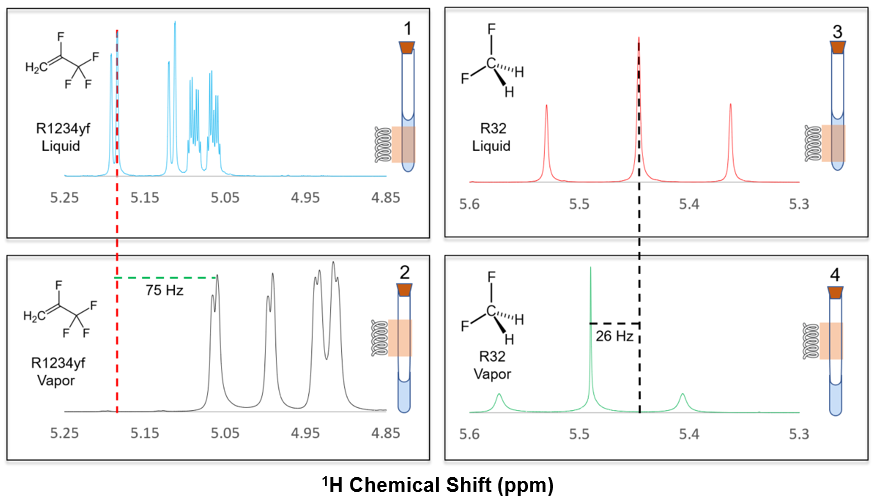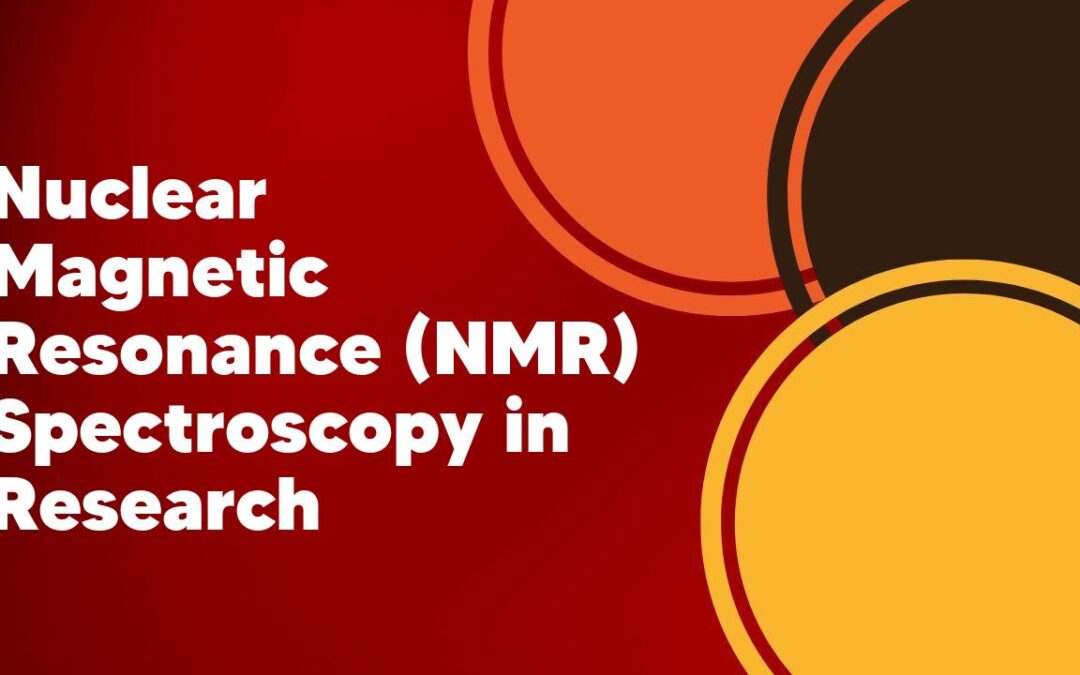Nuclear Magnetic Resonance (NMR) spectroscopy has become an essential tool in scientific research. This powerful technique allows scientists to study the structure, dynamics, and interactions of molecules at the atomic level. In this article, we will explore the various applications of NMR spectroscopy in different fields of research, highlighting its importance in advancing scientific knowledge.
1. Introduction to NMR Spectroscopy: A Powerful Tool for Research
NMR spectroscopy is an indispensable tool for researchers in various fields of science. As a scientist myself, I can confidently say that NMR spectroscopy has revolutionized the way we study the structure and dynamics of molecules. With its ability to provide detailed information about the atoms and their chemical environments, NMR spectroscopy has become an essential technique in chemistry, biochemistry, and pharmaceutical research. It allows us to unravel the mysteries of complex molecules and understand their behavior in real-time. The non-invasive nature of NMR spectroscopy also makes it highly versatile, as it can be applied to a wide range of samples, from small molecules to large proteins. Overall, NMR spectroscopy continues to impress researchers with its powerful and invaluable insights into the world of molecules.
2. Principles and Techniques of NMR Spectroscopy

Nuclear Magnetic Resonance (NMR) spectroscopy is a fascinating technique that allows us to study the properties of atoms and molecules. In this section, we will explore the principles and techniques behind NMR spectroscopy. NMR spectroscopy is based on the concept of nuclear spin, where certain atoms have a property called spin, which can be thought of as the atom’s intrinsic angular momentum. By applying a strong magnetic field, we can align the nuclear spins of the atoms in a sample. When radiofrequency pulses are then applied, the spins of these atoms flip, and as they relax back to their original state, they emit a characteristic signal. This signal can be measured and analyzed to provide information about the chemical and structural properties of the sample. NMR spectroscopy is widely used in fields such as chemistry, biochemistry, and medicine, and it has revolutionized our understanding of molecular structure and behavior.
3. Applications of NMR Spectroscopy in Various Fields of Research
In my research, I have explored the various applications of NMR spectroscopy in different fields. One fascinating application is in the field of drug discovery. By using NMR spectroscopy, we can analyze the interactions between drugs and their target molecules, providing valuable insights into their mode of action. This information is crucial in the development of new and improved drugs. Another exciting application is in the study of proteins and their structures. NMR spectroscopy allows us to determine the structure and dynamics of proteins, aiding in the understanding of their function and potential therapeutic applications. Additionally, NMR spectroscopy has proven to be a powerful tool in the field of environmental science, enabling the analysis of pollutants and contaminants in various samples. The versatility of NMR spectroscopy makes it an invaluable tool in many areas of research, contributing to advancements in the fields of medicine, biology, chemistry, and beyond.
4. Advancements and Innovations in NMR Spectroscopy Technology
In my opinion, one of the most exciting developments in the field of NMR spectroscopy technology is the advancements and innovations that have been made. Over the years, researchers and scientists have worked relentlessly to improve the sensitivity and resolution of NMR instruments. These advancements have led to the ability to obtain more detailed and accurate information about the structure and dynamics of molecules. Additionally, there have been significant advancements in the development of new techniques and methodologies in the field of NMR spectroscopy. These innovations have expanded the scope of NMR spectroscopy and have allowed for the study of more complex systems and the characterization of new materials. Overall, these advancements and innovations have revolutionized the field of NMR spectroscopy and have paved the way for new discoveries and breakthroughs in various scientific disciplines.
5. Challenges and Limitations of NMR Spectroscopy in Research
As a researcher working with NMR spectroscopy, I have encountered various challenges and limitations that come with this powerful analytical technique. Firstly, one of the major hurdles is the high cost involved in purchasing and maintaining NMR instruments. These machines require regular servicing and calibration, adding to the already hefty investment. Additionally, NMR experiments can be time-consuming, especially when dealing with large complex molecules that require multiple scans for accurate results. Another limitation is the sensitivity of NMR spectroscopy, which can be affected by impurities or low concentrations of the sample being analyzed. Despite these challenges, NMR spectroscopy remains an invaluable tool in my research, providing crucial insights into molecular structures and dynamics.
6. Future Prospects of NMR Spectroscopy in Advancing Scientific Research
In my opinion, the future prospects of NMR spectroscopy in advancing scientific research are incredibly exciting. With the advancements in technology and the increasing availability of NMR instruments, researchers are now able to explore a wide range of applications. One area that shows great potential is in the field of drug discovery. NMR spectroscopy allows scientists to analyze the structure and dynamics of molecules, providing valuable insights into the interactions between drugs and their target proteins. This knowledge can lead to the development of more effective and targeted therapies. Additionally, NMR spectroscopy is being used in other fields such as materials science, environmental studies, and food science. The ability to accurately study the composition and behavior of various substances opens up countless opportunities for scientific breakthroughs and advancements. Overall, I believe that NMR spectroscopy will continue to play a crucial role in fueling scientific discoveries and pushing the boundaries of our understanding in numerous fields.
Conclusion
In conclusion, Nuclear Magnetic Resonance (NMR) spectroscopy is an invaluable tool in scientific research. Its ability to provide detailed structural and molecular information has revolutionized fields such as chemistry, biochemistry, and medicine. Its non-destructive nature and wide range of applications make it a versatile technique that will continue to contribute to advancements and breakthroughs in scientific research.
What is Nuclear Magnetic Resonance (NMR) spectroscopy?
Nuclear Magnetic Resonance (NMR) spectroscopy is a powerful analytical technique used to study the structure, dynamics, and properties of molecules.
How does NMR spectroscopy work?
NMR spectroscopy works by subjecting a sample to a strong magnetic field, which causes the atomic nuclei to align with the magnetic field. Radiofrequency pulses are then applied to the sample, causing the nuclei to absorb and emit electromagnetic radiation at characteristic frequencies. By measuring these frequencies, valuable information about the sample’s chemical composition and molecular structure can be obtained.
What are the major applications of NMR spectroscopy?
NMR spectroscopy has a wide range of applications in various fields. It is commonly used in chemistry, biochemistry, and materials science to determine the structures of small molecules, proteins, nucleic acids, and polymers. It is also used in medicine for medical imaging techniques like magnetic resonance imaging (MRI).
What are the advantages of NMR spectroscopy?
NMR spectroscopy offers several advantages over other analytical techniques. It is non-destructive, meaning that the sample can be recovered and used for further analysis. It is also highly sensitive, capable of detecting trace amounts of substances. Additionally, NMR spectroscopy provides detailed structural information, allowing for precise characterization of molecules and compounds.
Are there any limitations to NMR spectroscopy?
While NMR spectroscopy is a powerful technique, it does have some limitations. It requires relatively large sample sizes and can be time-consuming. The cost of the equipment and expertise required to perform NMR experiments can also be significant. Some molecules may not be suitable for NMR analysis due to certain properties or high complexity.
Is NMR spectroscopy safe?
When performed correctly and following safety protocols, NMR spectroscopy is considered safe. NMR instruments utilize strong magnetic fields, but as long as proper precautions are taken, such as ensuring the absence of ferromagnetic materials in the vicinity, there is usually no risk to human health.

